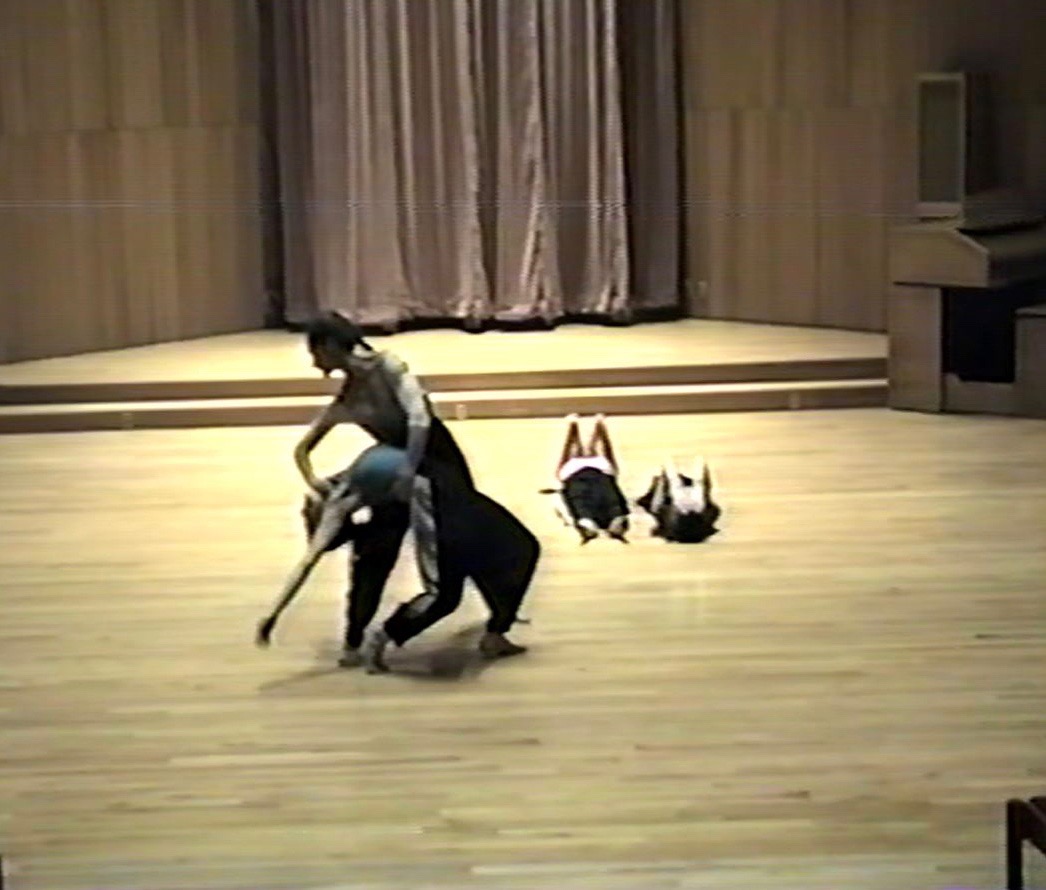Continuing the blog entries on my international work, I flew from Israel back to Italy, and Kezia arrived there from the U.S., and so rehearsals began in earnest for the upcoming performance for the Pitigliano Festival of Jewish Film and Culture.
In the February 2000 Avodah Newsletter, Kezia reported:
Our trip to Italy came about in great part through the extensive organizing efforts of former Avodah dancer and dear friend Deborah Hanna Leoni, who had been living in Italy (and teaching dance there) since 1992. It was Deborah and two of her delightful advanced students whom I joined to form Avodah’s Italian company. Deborah and her husband Jeevan generously housed JoAnne and me in their country cottage in the very beautiful Tuscan village of Tarquinia, a center of ancient Etruscan life, about 45 minutes from Rome and 15 minutes from the Mediterranean Sea. With stone streets and buildings tinted in warm fresco shades of gold and orange and green with castle-like wooden doors, Tarquinia is a hill town with an expansive view of velvety green countryside. For people who teach, as we do, I believe it is a good reminder to return periodically to being a beginning-level student of anything – to remember just how bare – and frustrating – beginning knowledge is. Since neither JoAnne nor I speak Italian, we had a good dose of “beginnership,” but we found that people determined to find a common understanding are reassuringly able to do so.
We also figured out puzzling light switches, door latches and toilet mechanics, learned to wash dishes using the least possible amount of water (start with that handy pot of water left from boiling pasta) and functioned for periods (common) when the water was turned off or the electric was out. (The cottage was perfectly and appropriately lovely in candlelight.) Our Italian alarm clock each morning was the gunshot chorus of local men hunting for small birds on the property. We deciphered money and purchased groceries (everything FRESH), ate pine nuts from the ground and gourmet mushrooms picked by Jeevan’s family, and watch his mother make us homemade gnocchi. We learned that, like nearly everything else in life, there is a skill to hanging wash on a clothesline – and we did not have it. We were made sharply aware of how luxuriously we usually live, particularly in terms of the use of water, electric and gas, and I felt downright wealthy when I returned home and was able to wash and dry all my clothes at the laundromat. We learned that in Italy, concepts of “efficient” and “businesslike” do not exist as we know them in New York; “casual,” “social” and “personal” are the critical elements of life, as is “generous.” And they do make for a charming, if drastically different, life. For a high school workshop, the students each contributed a sum toward our booking, and we were paid with an envelope of small bills and coins, like the collections I remember for elementary school “milk money.” I – who am still surprised each time JoAnne pays me for dancing – have never felt such a direct connection between my work and my pay.

The theatre in Pitigliano had a historic feel to it. The stage was just large enough but it did present a bit of a challenge as it was a raked stage (meaning that it sloped upward away from the audience). Fortunately the dancers were able to adjust quite quickly.

The performance consisted of six pieces, and one of them was created for this special event. Entitled Generations,it was inspired by the Hebrew phrase “L’dor V’dor” (“from generation to generation”) and focused on the Jewish woman’s role of carrying on tradition. In seeing a video of the piece, I wasn’t sure at all what I was really trying to say. How I was able to watch a video of the piece was an interesting story in itself. Deborah reminded me that there was a video of the performance and thought that Kezia had a copy of it. It was a VHS which is very outdated and most of us no longer have VCR machines that can play such tapes. Kezia however does still have a VCR, but she doesn’t have the means to transfer a VHS into a format such as an mp4 which would be easy to send over the Internet. So, resourcefully, Kezia played the video on her VCR and filmed it on her phone and sent it to me.

The other pieces were: Hallelu – a setting of the 150th Psalm; Negro Spirituals – four solos from Helen Tamiris’s work (danced by Kezia) which had been reconstructed by Elizabeth McPherson from the Labanotated score; M’Chamocha – a piece celebrating the crossing of the Red Sea; Kaddish – a work set to 8 minutes from Leonard Bernstein’s Kaddish symphony, and Shema – a setting of Primo Levi’s writing. Search this blog site for entries describing some of these pieces more fully. In the Avodah Newsletter Kezia described performing Shema:
Most memorable in this performance was the inclusion of our repertory work Shema based on the writings of Italian Holocaust survivor Primo Levi. JoAnne insisted on performing this work, defying suggestions that Italian dance audiences prefer lighter pieces. In Shema the dancers speak excerpts from the writings of Primo Levi. In this performance the text was recited (by our Italian actress, Elisabetta Irrera) in its original Italian. The impact upon the audience was powerful, earning the longest applause of the program.


[print_link]

















